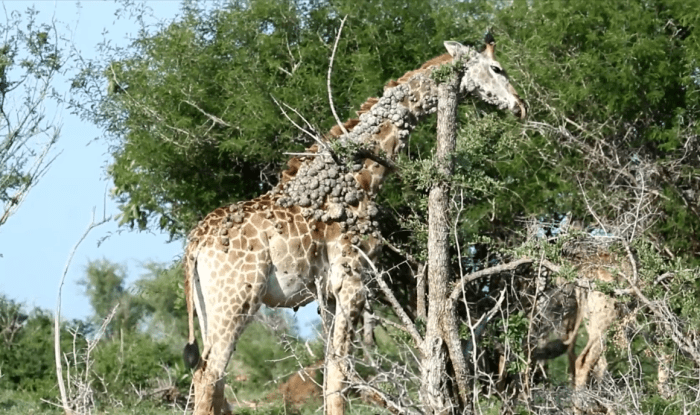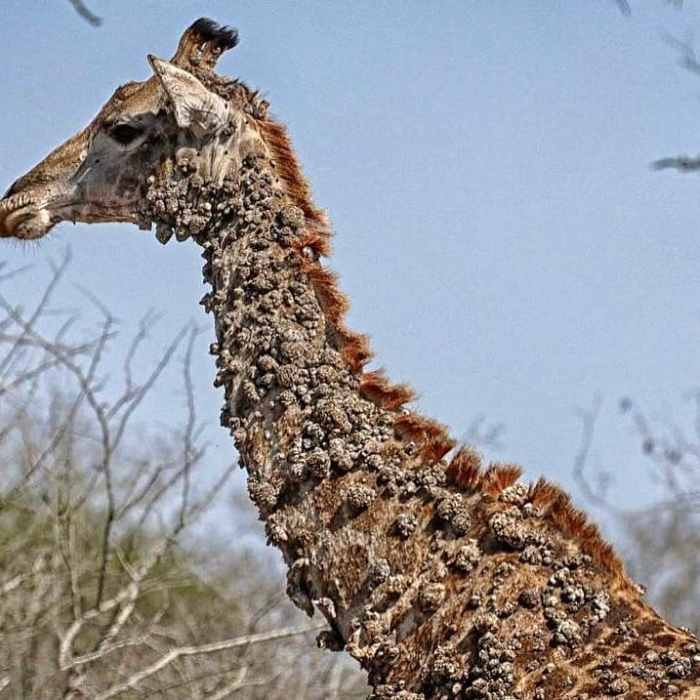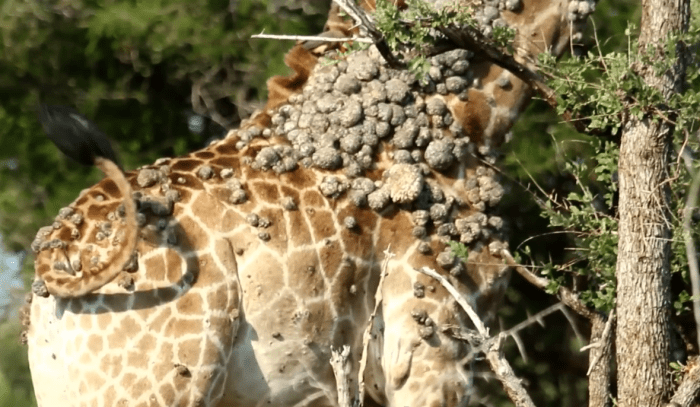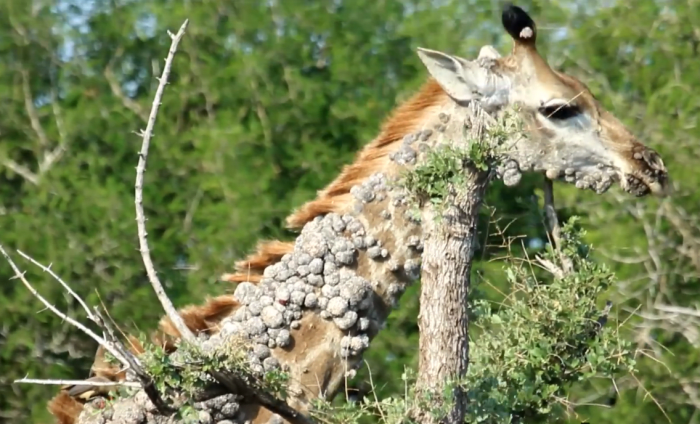Note: we are republishing this story which originally made the news in January 2019.
A giraffe in South Africa’s Kruger National Park is grabbing headlines after being spotted with an unusual condition that made it look like it was slowly turning into a tree.
Photos of the giraffe reveal its neck covered in rough, bark-like growths. While at first glance it might look like a bizarre camouflage or a rare mutation, the real explanation is something a bit more familiar — a viral infection known as papillomavirus.

The virus, which is known to affect a variety of animals including cattle, causes thick, crusty lesions to form on the skin. While the growths may look alarming, experts say the virus is not deadly. However, the lesions can become extremely irritating, especially if they’re scratched repeatedly, which can lead to open wounds or secondary infections.
In giraffes, papillomavirus is most commonly spread by oxpeckers — small birds that often sit on large mammals and feed on the ticks living in their skin. While they help control parasites, these birds may inadvertently spread viruses by pecking at irritated skin.

The giraffe was photographed by Helen Olive, a seasoned wildlife photographer and civil servant from Oxfordshire, England. She’s spent over 15 years photographing animals in the wild — but says this encounter was unlike anything she’d ever seen.
“At first, I thought the giraffe was just standing behind some bushes,” Olive said. “But then I realized what I was seeing was actually part of its body — it looked like the giraffe had a virus that made its skin resemble tree bark.”
Papillomavirus is not unique to giraffes. It appears in many species, including humans, rabbits, and chimpanzees. Each strain is highly species-specific, meaning the version affecting giraffes poses no risk to other animals or people.

Giraffes are the tallest land mammals on Earth, capable of growing nearly 20 feet tall. They roam savannahs and open woodlands across Africa, including in South Africa, where conservationists have worked hard to rebuild their numbers.
Following years of challenges due to poaching, habitat loss, and disease, South Africa’s giraffe population has rebounded to over 30,000 — thanks to focused preservation efforts. Still, unusual cases like this serve as a reminder that even iconic wildlife faces lesser-known threats.

Despite its strange appearance, this giraffe is expected to survive, as papillomavirus infections generally don’t shorten lifespan unless complications arise.
For now, it remains one of Kruger National Park’s more mysterious — and unforgettable — sightings.
Sources: Daily Mail





